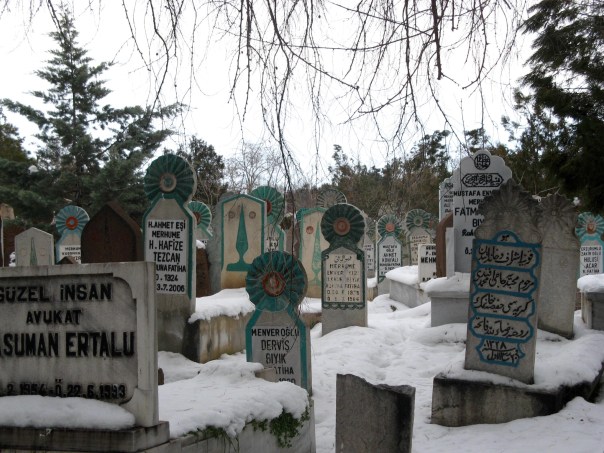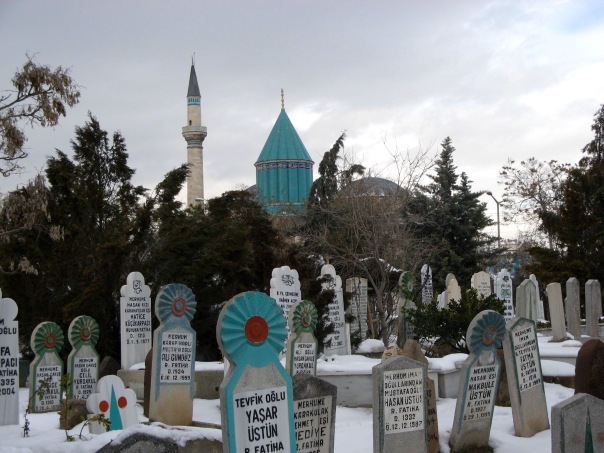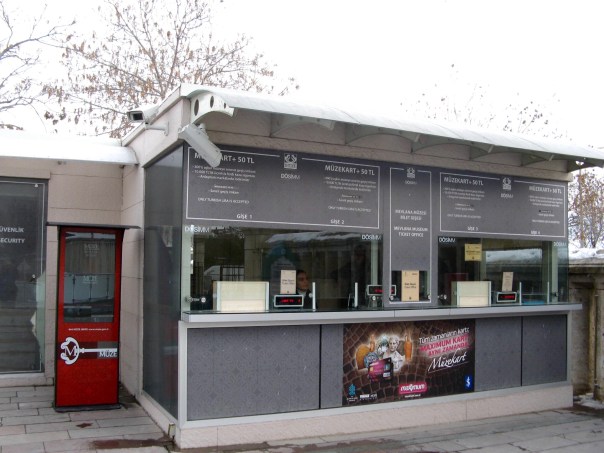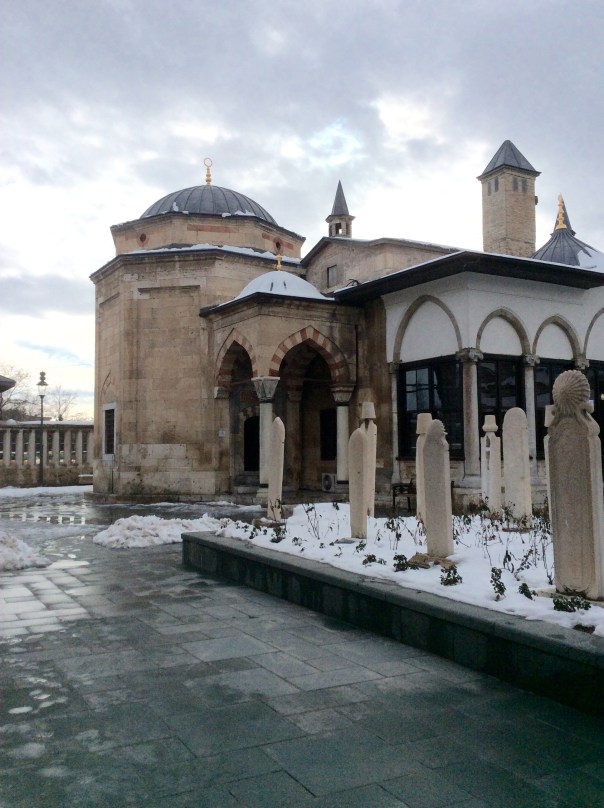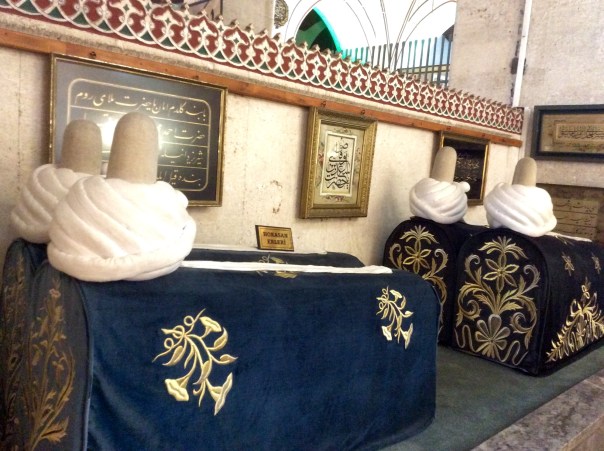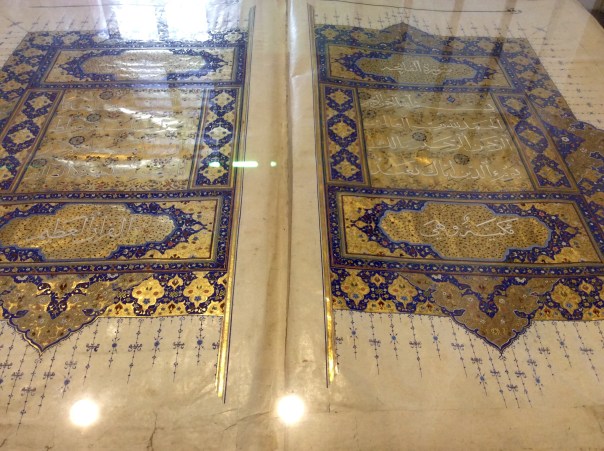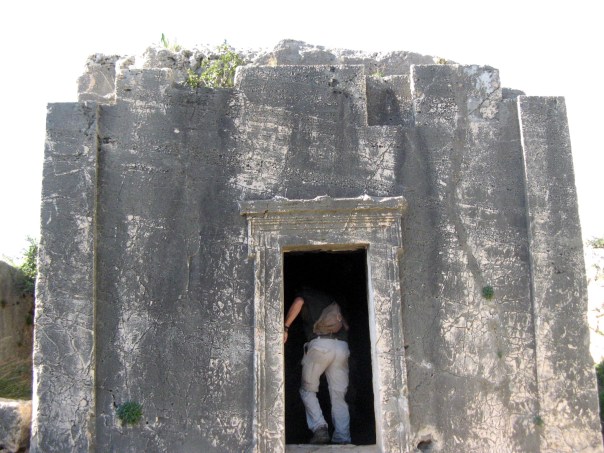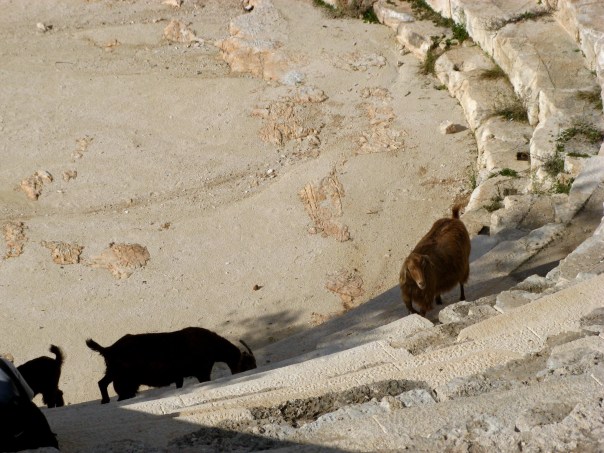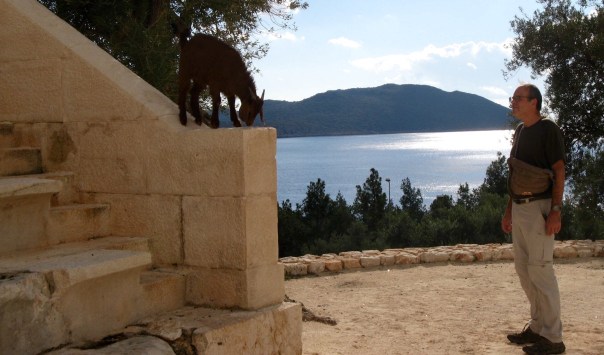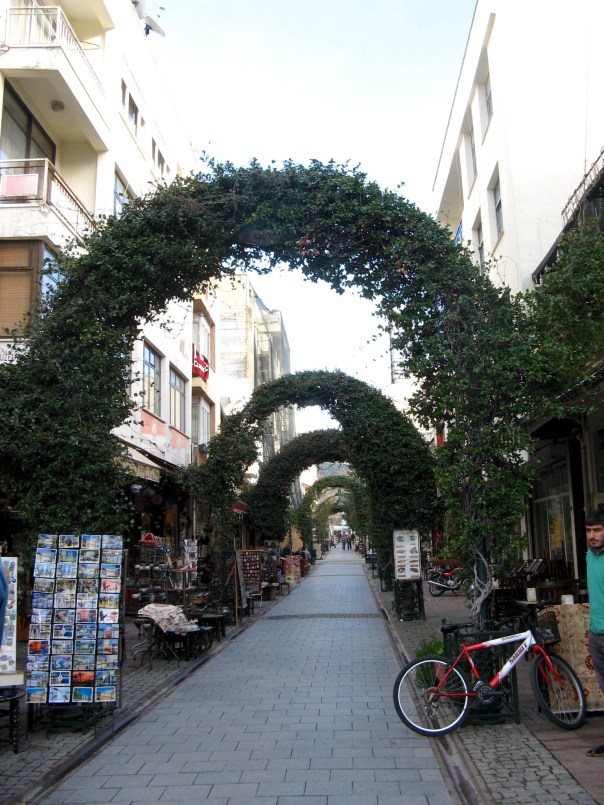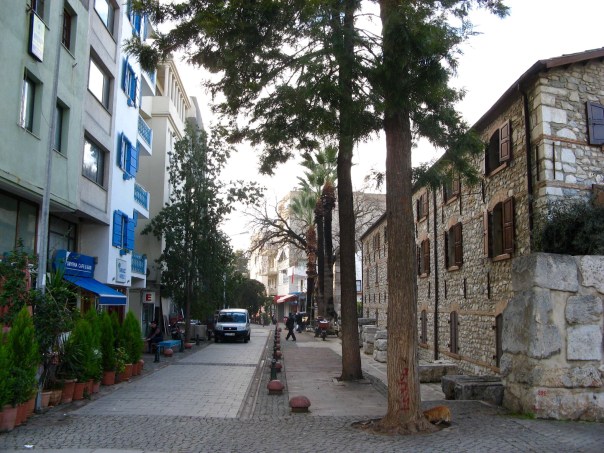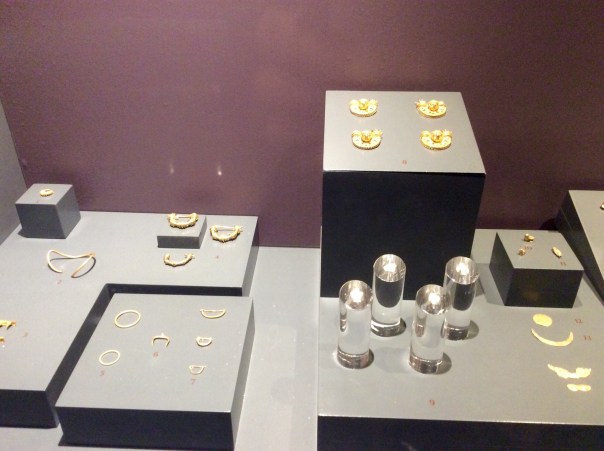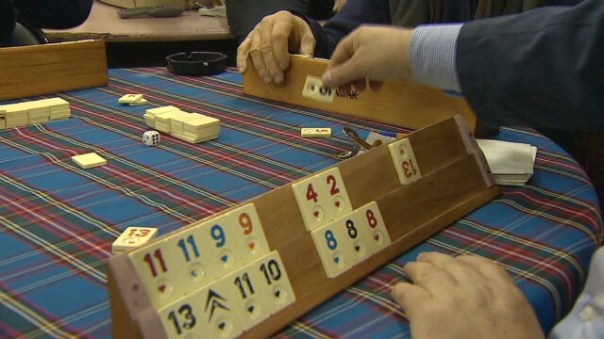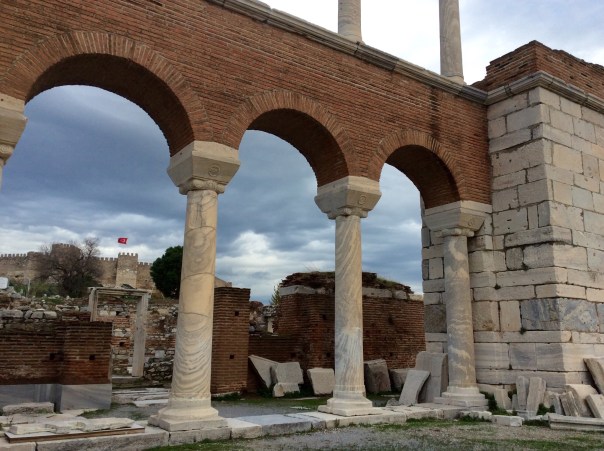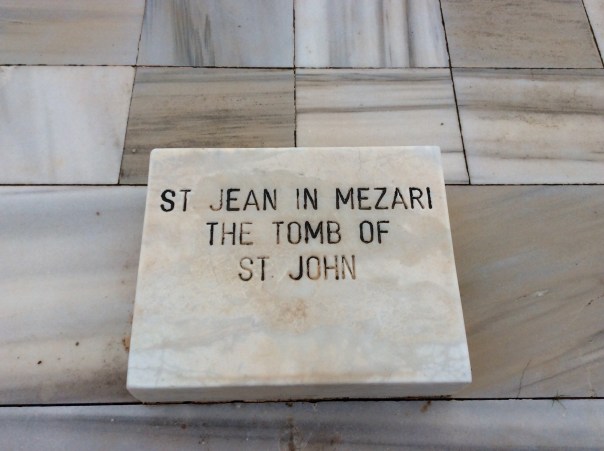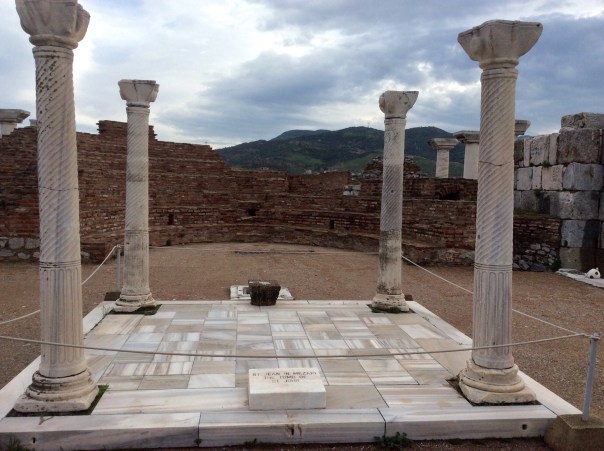1/12 – Happy to say that the temperature rose to the 30s today, so the ice melted off the streets, and turned the sidewalks to dirty icy slush. Reminds me of growing up in New York…
Today we set out from our apartment in the opposite direction, and it turns out we are only a few blocks from the city. Our street is very quiet, as we are on the far side of the city cemetery.
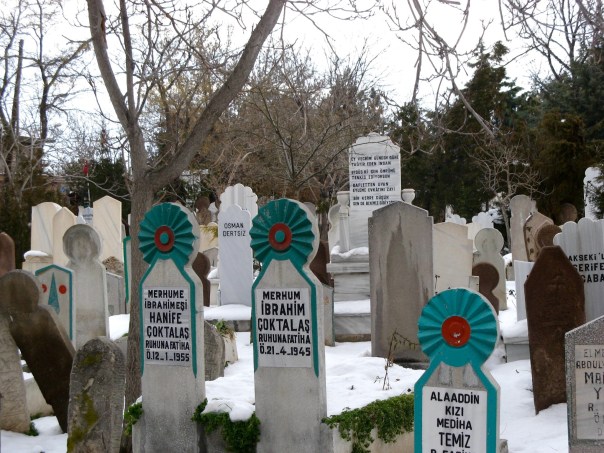
We haven’t seen headstones like these before.
We’re on our way to see Rumi’s tomb, at the Mevlana Museum. Mevlana means Master, and refers to Rumi. You can see the green spire (tower?) of the museum in the distance. The spire is the same color green as the decoration on the headstones. I looked online, but was unable to discover any info about this.
Here’s a funny thing. At the entrance to the museum is a ticket booth and a sophisticated electronic turnstile. We stand a moment, trying to puzzle out the price of admission, which seems to be 50 lira ($22) plus some sort of museum card. We are mentally figuring what the total cost might be, and that this is the most expensive museum we’ve encountered, when the person in the ticket booth smiles and says the entrance is free. Free? Yes, and hands us two fancy tickets, which we scan to get through the turnstile. Most curious!
Once inside, the first thing we saw was an invitation to visit Rumi’s mom. What a nice thought!
The museum consists of several mausoleums. We headed to the main building, where Rumi’s tomb is located.
Inside we found the sarcophagi of some of Rumi’s relatives and close followers from the thirteenth century. Sufi turbans decorate each one.

Some look like Sufis seated at prayer.
Rumi’s sarcophagus is covered in golden brocade and the area is beautifully decorated.
The museum contains a mosque, and a collection of illuminated Qur’ans, ranging in size from very large to a little octagonal one the size of a silver dollar.
We saw the Mevlana’s Sufi robe and turban.
As always, I was attracted to the intricate designs on the walls and ceilings.
The rest of the museum showed us Sufi artifacts, including the instruments played during the whirling dance, and some seriously heavy prayer beads.
The cane-like thing is a chin rest, so Sufis in training could take short naps without laying down!There were dioramas that showed how Sufis were trained for 1001 days.
As we left the museum, we were invited in for tea at a ceramic shop with gorgeous handpainted plates (my favorite!) unlike those we have seen anywhere in Turkey. The proprietor, Issa, was very knowledgeable and shared much about the Mevlana, Islam, and porcelain.
One of the down sides of backpacking is that we have to resist the urge to buy pretty things, as we can’t carry them around, and shipping cost back to the states is prohibitive. We’ll have to be satisfied with the memory of these beautiful plates…


